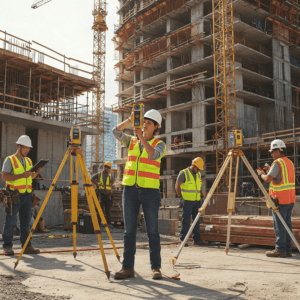Accurate Measurements: A Must for a Smooth Building Process
By Aswin Kumar, Unified Studio Architect

When it comes to architecture, precision is paramount. Inaccurate measurements can lead to delays, increased costs, and structural issues. Here are some tips to ensure you get the correct measurements before starting any building project, ultimately avoiding last-minute delays and mishaps.
1. Use the Right Tools for the Job
The foundation of any accurate measurement is the right tools. Invest in high-quality measuring equipment such as laser distance meters, digital calipers, and tape measures. Advanced tools like 3D scanners can also help capture detailed measurements of existing structures.
2. Double-Check Measurements
The age-old adage, “measure twice, cut once,” holds true. Always double-check your measurements to ensure accuracy. Small errors can snowball into significant issues down the line, so take the time to verify every measurement.
3. Consider Environmental Factors
Environmental factors such as temperature, humidity, and wind can impact measurements. Be aware of these variables and account for them when taking measurements. For example, metal components may expand or contract with temperature changes, affecting their dimensions.
4. Collaborate with Experts
Consult with structural engineers, surveyors, and other experts to validate your measurements. Their expertise can help identify potential errors and ensure that all measurements align with the project specifications.

5. Implement a Quality Control Process
Establish a quality control process to review and approve all measurements before proceeding. This process should include regular audits and inspections to catch any discrepancies early on. A robust quality control system can prevent costly rework and delays.
6. Document Everything
Keep detailed records of all measurements and any changes made during the project. Proper documentation ensures that everyone involved is on the same page and can reference accurate data when needed. This practice also helps in resolving disputes and claims.
7. Leverage Technology
Modern technology offers numerous tools to enhance measurement accuracy. Building Information Modeling (BIM) software, for example, allows for precise digital representations of the project. Utilize technology to streamline the measurement process and improve accuracy.
8. Communicate Clearly with the Team
Clear communication is essential for any successful project. Ensure that all team members understand the importance of accurate measurements and are trained in best practices. Regular meetings and updates can help keep everyone aligned and minimize errors.
By following these tips, you can ensure accurate measurements and avoid last-minute delays and mishaps in your building projects. Accurate measurements not only save time and money but also contribute to the overall success and safety of the project.

Remember, precision is the key to a smooth building process. Stay diligent, and your projects will thank you for it!
